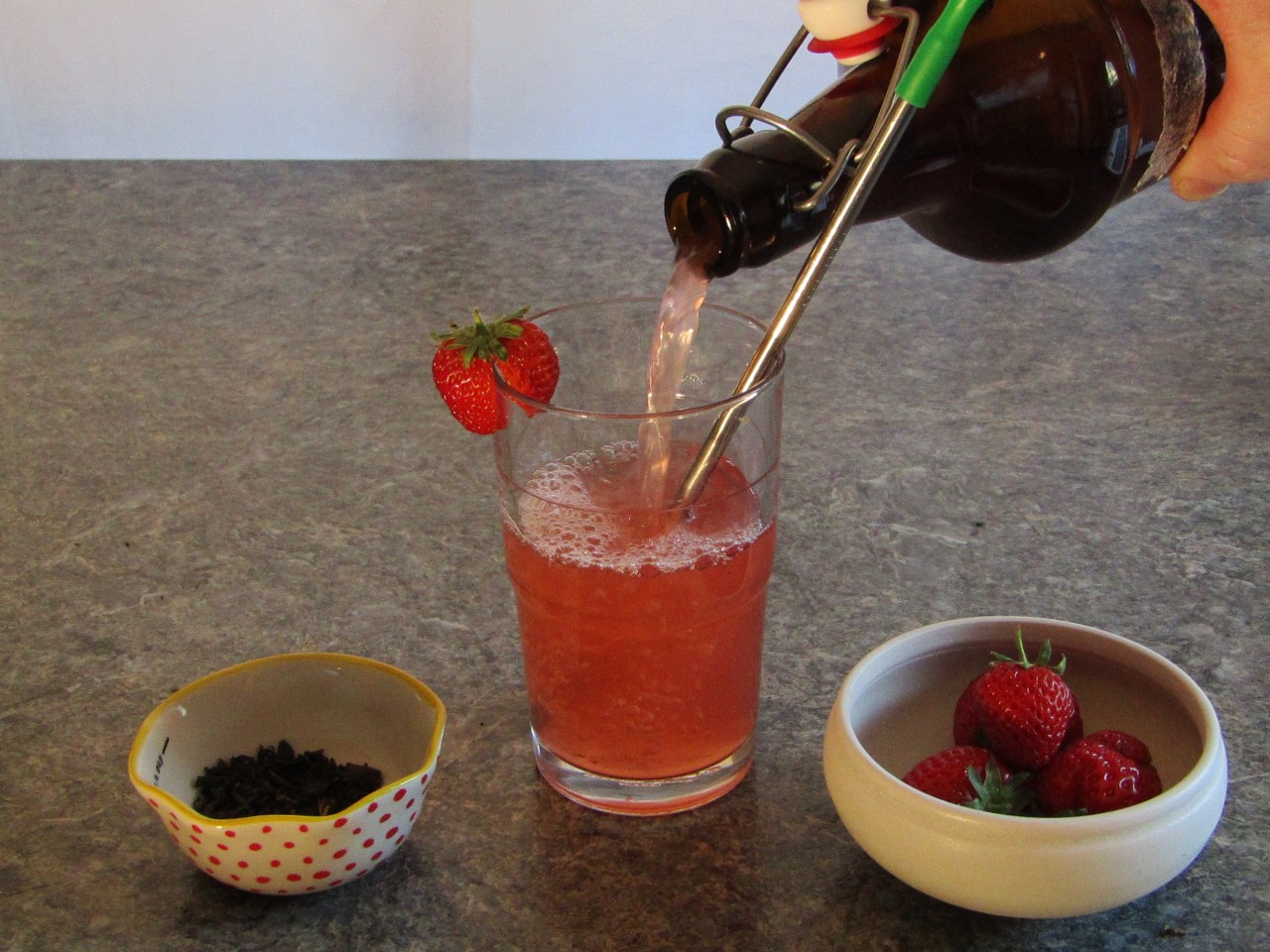This post contains affiliate links.
The first time you taste kombucha you will experience a unique sensory experience. Kombucha, a fermented tea, can come in a variety of flavors from ginger to mango and beyond. Each of these flavoring ingredients alters the overall flavor of the kombucha but the base flavor remains essentially the same.
Kombucha’s base flavor stems from the acetic acid concentration of between 7000-9000 mg/liter, the astringency from the tea leaves and flavoring and the carbonization during second fermentation giving the mouth a tingly feeling reminiscent of soda pop.
The three components to be aware of when considering the flavor of anything, kombucha included, are the aroma, the taste and the mouth-feel. The flavor of kombucha depends on the elements which make up these three components
The aromatic components of kombucha
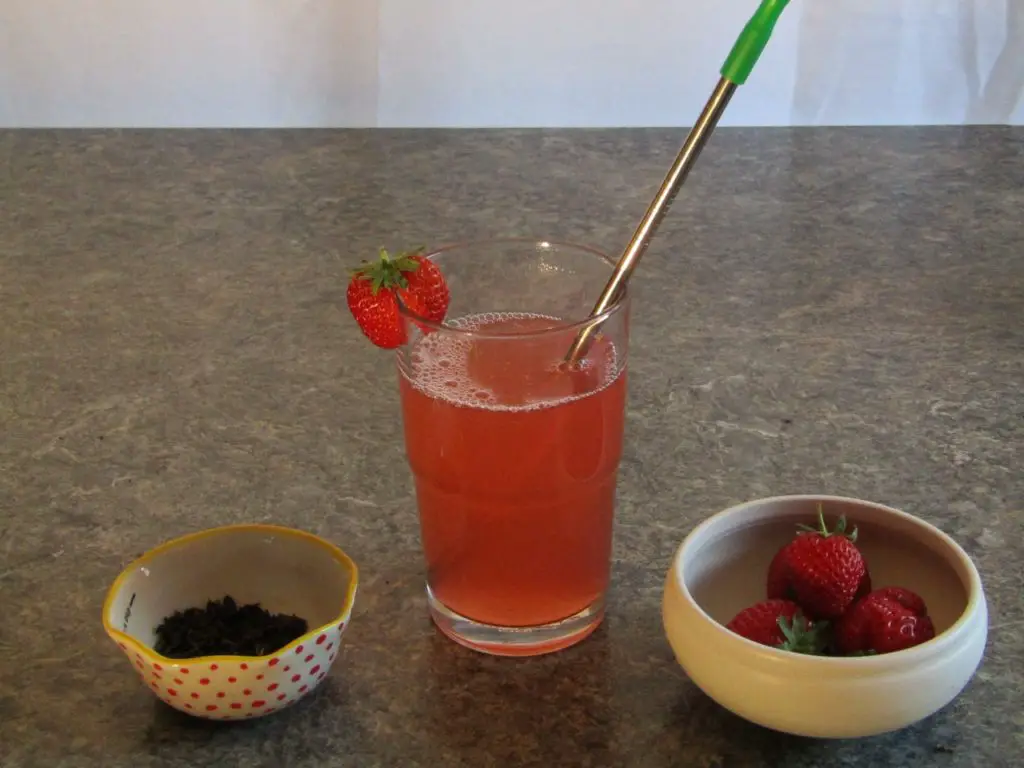
The aroma of kombucha, its smell, is made up of the volatile components in the kombucha. These are the compounds in the kombucha which become airborne when a bottle of kombucha is opened. They are mostly made up of acetic acid compounds mixed with the flavoring agent during second fermentation with added components from the yeast which dominated the fermentation.
If black tea is used the original tea fragrance will not be detectable since the volatile components of the tea will have escaped into the air during the steeping process prior to the primary fermentation and if any was left once the tea leaves were removed it would have evaporated during the 7-14 day fermentation.
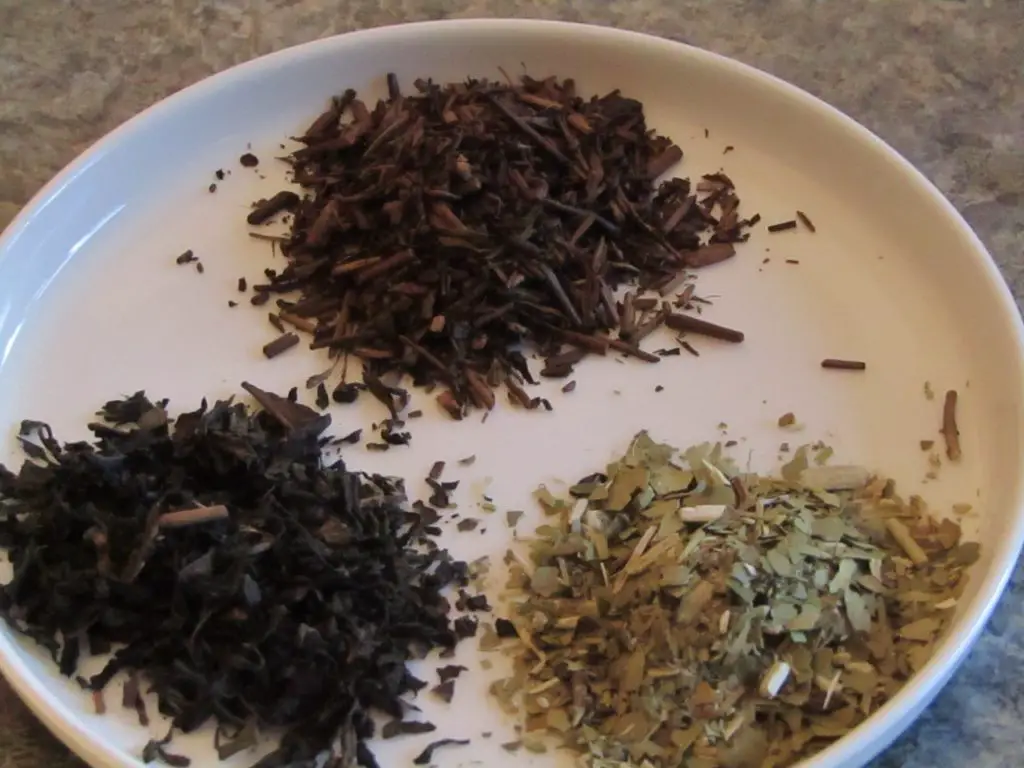
Green and other non-oxidized teas (white, oolong) have fewer volatile compounds in the leaves. As the kombucha ferments in the primary fermentation these compounds are oxidized and depending on the primary fermentation time, some may remain prior to bottling. As a result these compounds may be detected in the finished kombucha.
There is a small amount of alcohol produced during fermentation which adds to the fragrance once the kombucha is opened. Alcohol is a volatile compound which evaporates into the air quickly with the help of expanding carbon dioxide. The type of alcohol produced will depend on the chemical makeup of the kombucha solution, the dominant yeast and second fermentation time.
Additionally the aromatic compounds in the flavoring agent during second fermentation will infuse with the other volatile compounds giving your kombucha additional fragrance.
The Taste components of kombucha
Taste is what you sense on your tongue when you eat something. Your taste buds can detect five basic flavors in various combinations. They are sweet, salty, bitter, sour and umami. Everything you eat has each of these in varying degrees giving everything you eat a different flavor.
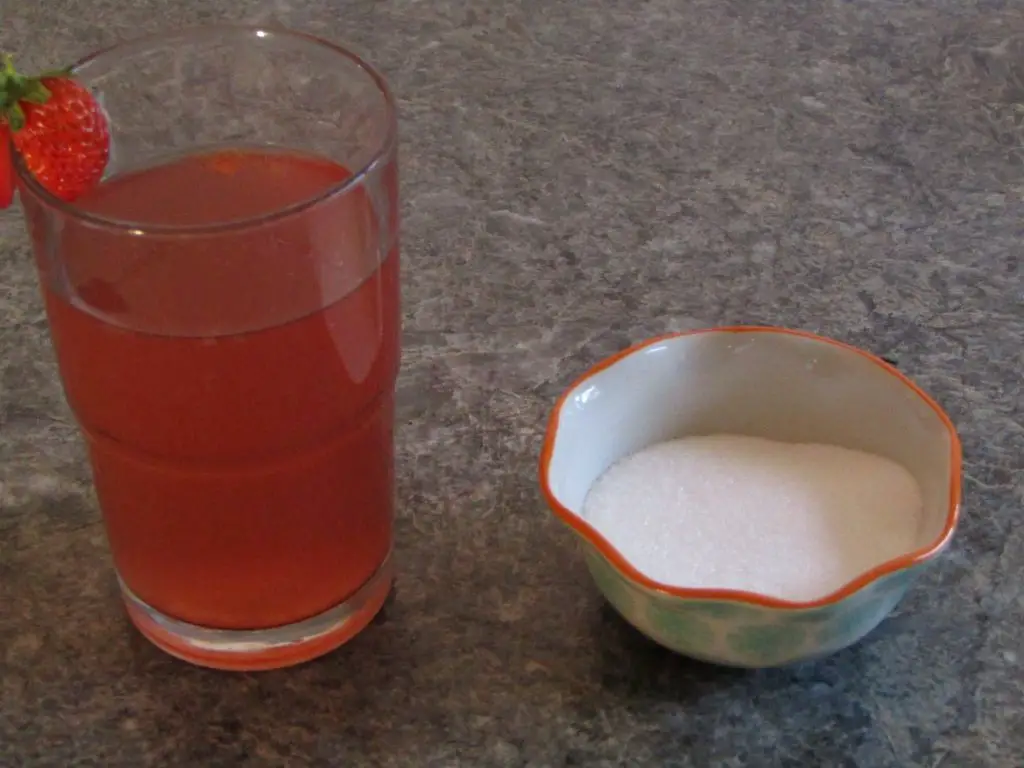
Although Kombucha has all five of these flavors there are two which dominate the taste profile; sweetness and sourness.
The source of the sweetness of kombucha
Kombucha is made by adding a culture to tea sweetened with some type of sugar. It could be white sugar, brown sugar, molasses or a wide variety of other kinds but they are all made from two primary types of simple sugar, glucose and fructose.
Although the microorganisms in the SCOBY can consume both glucose and fructose it is much better at digesting the glucose leaving the fructose behind. When kombucha is fermented for short periods of time it is high in fructose and can taste very sweet. As it ages the bacteria able to use the fructose slowly lowers the sugar content in the kombucha.
Besides white sugar which is purified to remove everything but the glucose and fructose all the other forms of sugar will contain compounds which will affect the flavor of the kombucha. This is due to either the compound is present in the finished kombucha or because the various microorganisms found in the culture produced it.
The source of the sourness of kombucha
The sour flavor comes from organic acids in the kombucha. These can be from the ingredients directly when fruits like lemons, limes or other sour ingredients are added during the second fermentation but the main source of the sour flavor in kombucha is the acetic and lactic acid produced by the culture’s bacteria.
The kombucha SCOBY has a high concentration of acetic acid bacteria and as the name suggests produces acetic acid, otherwise known as vinegar. It is this vinegar which gives the kombucha its sharp acidic taste. Acetic acid is the most prevalent acid in kombucha but glucuronic acid and gluconic acid are also present.
Lactic acid can also be found in some kombucha fermentations depending on the fermentation environment, SCOBY heritage and starting ingredients. Lactic acid consumes glucose easily but also some strains use fructose for fuel so if they are present in high numbers they can reduce the sweetness of the kombucha and increase its sourness.
Time is also a factor, the longer the kombucha is fermented the more sugar in the tea is used by the bacteria which produce acid, making the kombucha sour.
The mouth-feel of kombucha
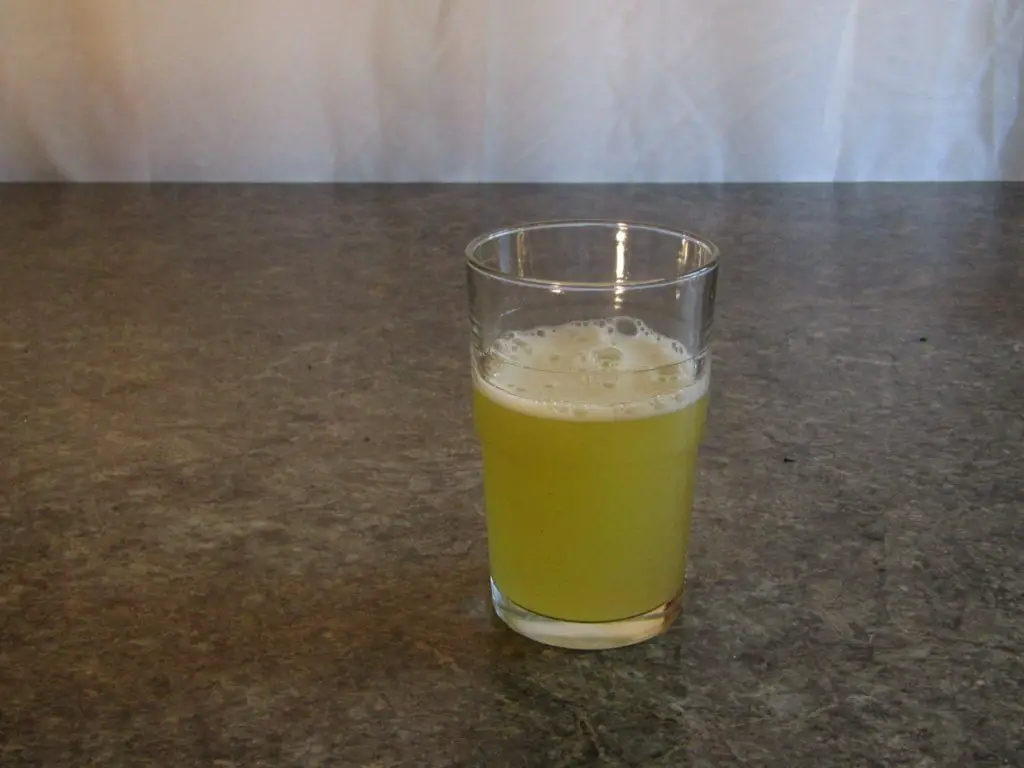
Mouth feel or the texture of a food has a great impact on its flavor. Foods which are spicy, slimy or hard produce particular feelings in the mouth which affect how the food is perceived. Kombucha, like any other food, has a particular mouth-feel which varies depending on its ingredients.
The mouth-feel of kombucha is dominated by its carbonation and acid level. The carbonation is produced during the second fermentation stage whereas the acid level is dependent on the amount of sugar used and the total fermentation period.
Factors which affect kombucha’s carbonation level
The carbonation level of kombucha is determined by the amount of easily fermented sugar in the second fermentation, the ambient temperature, the second fermentation time and the dominant yeast and bacteria.
Higher amounts of sugar and temperature will encourage the yeast in the kombucha to ferment quickly. This will produce copious amounts of carbon-dioxide which will remain in the liquid as long as the pressure is maintained. Once the pressure is released (by opening the bottle) the carbon-dioxide will gassify and create bubbles.
Some kombucha cultures produce a higher amount of carbonation than others. Kombucha SCOBYs with a high amount of lactic acid bacteria produce less carbon-dioxide than those with higher amounts of acetic acid.
Lactic acid bacteria can produce lactic acid bacteria through two pathways:
- Heterolactic fermentation
Heterolactic fermentation produces some carbon-dioxide and several acids. This pathway is used by Leuconostoc mesenteroides and is present in the production of fermented vegetables like sauerkraut. This type of bacteria is often found in kombucha cultures.
- Homolactic fermentation
Homolactic fermentation does not produce any carbon-dioxide. This pathway is used by Lactobacillus delbrueckii and S. thermophiles which are involved in yogurt production but can also be found in kombucha cultures.
Other factors which can affect the mouth-feel of kombucha
The kombucha culture, type of tea and the second fermentation flavoring agent all affect the mouth-feel of your kombucha.
How the kombucha culture can affect the mouth-feel of kombucha
As mentioned above the presence of specific lactic acid bacterial strains can affect the amount of carbonation but they also affect the texture of the kombucha. Some lactic acid bacteria produce high amounts of biofilm which protects the culture from contamination and infection from the environment. The biofilm is thought to be the precursor to the pellicle (the cellulose mat or what many refer to as SCOBY) is formed from.
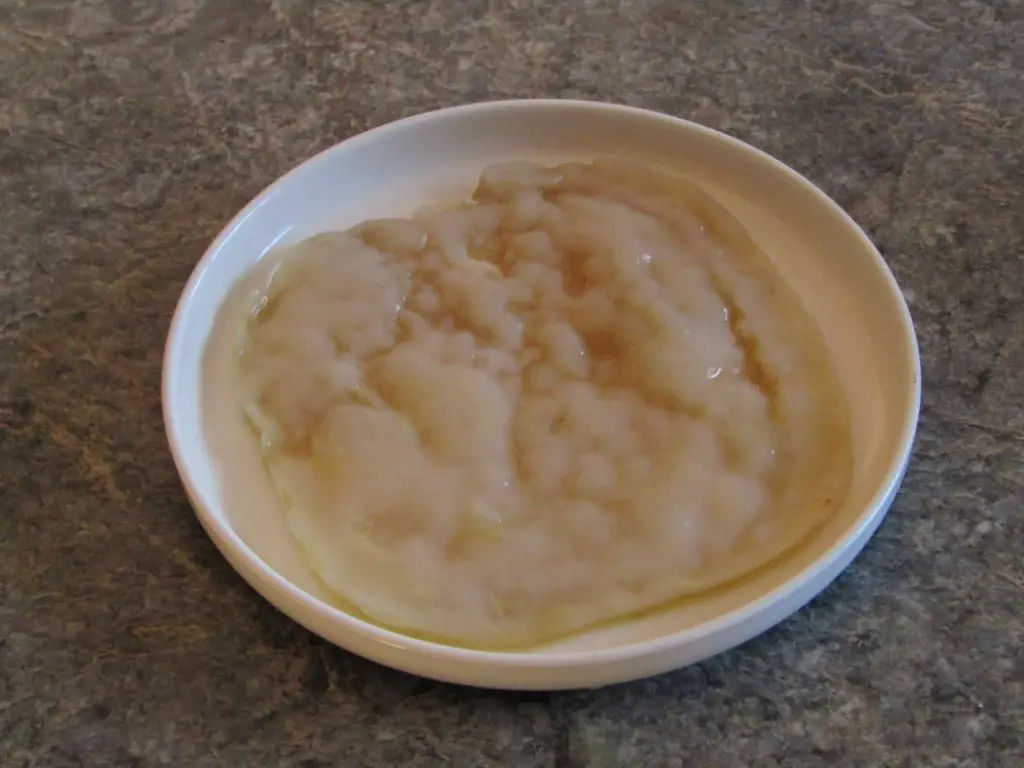
High amounts of biofilm has the effect of maintaining the head on the kombucha longer, providing a lingering taste and adding thickness to the texture of the kombucha.
How the type of tea can affect the mouth-feel of kombucha

The type of tea used can alter the mouth-feel by varying the astringency of the final product. Astringency is not a flavor as it is not detected by the taste buds but rather it causes dehydration in cells it comes in contact with. This produces the familiar tightening of the tissues in the mouth when in high concentration.
Various teas and other tinctures which are used to make kombucha have higher or lower amounts of astringent compounds in them which ultimately affect the mouth-feel of kombucha. Astringency is associated with the amount of tannins in the food. Tannins are the compounds in the tea leaf which give tea its color.
Black tea, due to its high oxidation levels, provides the highest levels of astringency. This is easily seen by the dark color of the tea used to make kombucha.
Oolong has an oxidation level between 8-85% which means its astringency is somewhat lower than black tea but still has an abundant amount of tannins.
Green tea which is not oxidized at all still has high astringency which can be detected in kombucha. The leaves of the camellia sinensis plant which is used to make all types of tea is high in tannins but with green tea it is locked up in the leaves. This is one of the reasons why green tea is best when made with water which is not quite boiling ( 175℉ (80℃) to 180℉ (82℃) ). Once these compounds are released into the water they will be oxidized by the culture which darkens the kombucha as well as increasing the detectable astringency.
Green tea is usually used to produce Jun, which is a kombucha variant made with green tea and honey. It is not usually second fermented which makes it a nice slightly tart, sweet drink with clean flavor.
To get a higher or lower astringent mouth-feel in the kombucha the amount of tea leaves used to make the tea can be adjusted. A higher concentration of leaves in the original tea will affect the amount of tannins in the tea used to make kombucha. After a five minute steep in hot water the concentration of tannins in the leaves and the water will have equalized, therefore to increase the tannins in the water more tea is needed. More information regarding kombucha tea steeping time can be found here.
How the second fermentation flavoring agent can affect kombucha mouth-feel
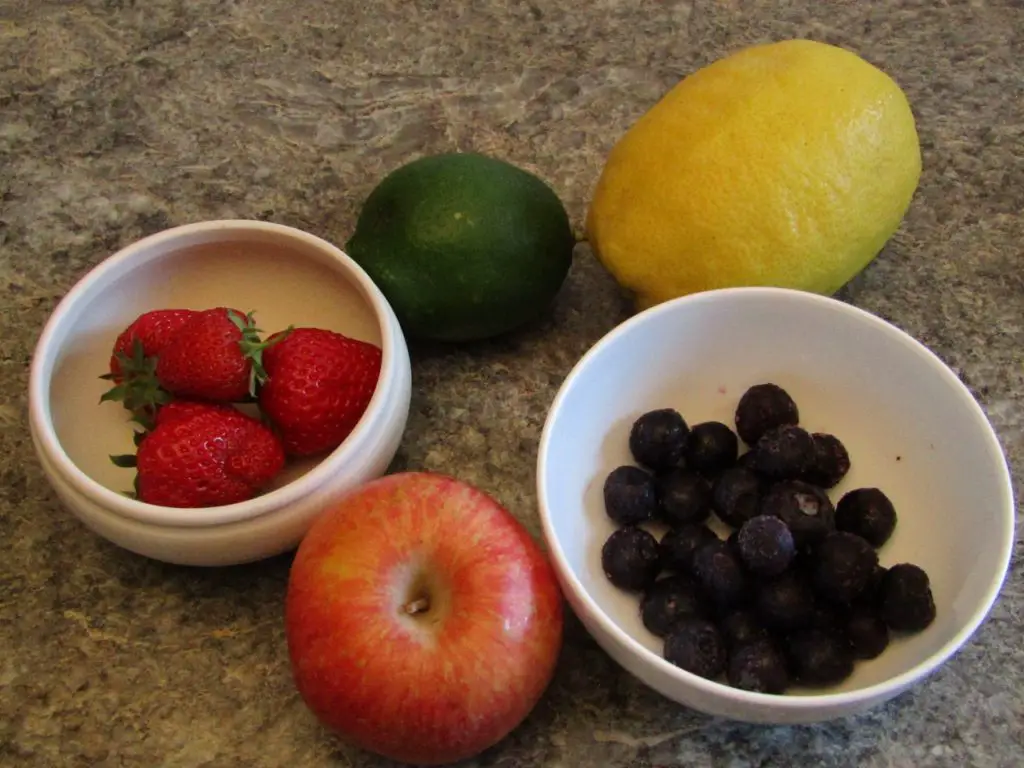
The second fermentation flavoring agent can have a profound effect on the mouth-feel of your kombucha. Adding astringent ingredients to the second fermentation will have a direct affect on its mouth-feel. Using hot peppers will add a spicy addition to the kombucha, again altering the mouth-feel. For more ways to flavor your kombucha checkout this article about several other methods of flavoring kombucha.

